Machine Translation: The MIT Press Essential Knowledge Series

Machine translation (MT) is a subfield of computational linguistics that investigates the use of software to translate text or speech from one language to another. MT systems are typically trained on large datasets of parallel texts, which are texts that have been translated from the same source language into multiple target languages. The training process involves learning the statistical relationships between the words and phrases in the source and target languages. Once trained, MT systems can be used to translate new texts from the source language into the target language.
MT systems have a wide range of applications, including:
- Language learning
- International communication
- Business and commerce
- Government and diplomacy
- Research and development
The history of MT can be traced back to the early days of computing. In 1949, Warren Weaver published a memorandum entitled "Translation" in which he proposed using computers to translate languages. Weaver's memorandum sparked considerable interest in the field of MT, and in the 1950s and 1960s, a number of MT systems were developed.
4.4 out of 5
| Language | : | English |
| File size | : | 1107 KB |
| Text-to-Speech | : | Enabled |
| Screen Reader | : | Supported |
| Enhanced typesetting | : | Enabled |
| Word Wise | : | Enabled |
| Print length | : | 204 pages |
| Paperback | : | 200 pages |
| Item Weight | : | 11.2 ounces |
| Dimensions | : | 5.5 x 0.5 x 8.5 inches |
The first MT systems were based on rule-based approaches. These systems used a set of handcrafted rules to translate text from the source language into the target language. Rule-based MT systems were able to achieve high levels of accuracy, but they were limited by the number of rules that could be handcrafted.
In the 1990s, statistical MT (SMT) systems began to emerge. SMT systems use statistical models to translate text from the source language into the target language. SMT systems are able to learn the statistical relationships between the words and phrases in the source and target languages, and they can achieve high levels of accuracy without the need for handcrafted rules.
In recent years, neural MT (NMT) systems have become the state-of-the-art in MT. NMT systems use neural networks to translate text from the source language into the target language. NMT systems are able to learn the complex relationships between the words and phrases in the source and target languages, and they can achieve high levels of accuracy even for difficult language pairs.
There are two main types of MT:
- Human-aided MT: Human-aided MT systems involve human translators in the translation process. Human translators may be used to pre-edit the source text, post-edit the machine-translated text, or both.
- Fully automatic MT: Fully automatic MT systems do not involve human translators in the translation process. Fully automatic MT systems are able to translate text from the source language into the target language without any human intervention.
Human-aided MT systems are typically used for high-quality translations. Fully automatic MT systems are typically used for low-cost translations.
The quality of MT output varies depending on a number of factors, including:
- The quality of the training data: The quality of the training data is one of the most important factors that affect the quality of MT output. MT systems that are trained on high-quality training data are able to achieve higher levels of accuracy.
- The size of the training data: The size of the training data is also an important factor that affects the quality of MT output. MT systems that are trained on larger training data sets are able to achieve higher levels of accuracy.
- The type of MT system: The type of MT system also affects the quality of MT output. Rule-based MT systems are able to achieve high levels of accuracy, but they are limited by the number of rules that can be handcrafted. SMT systems are able to learn the statistical relationships between the words and phrases in the source and target languages, and they can achieve high levels of accuracy without the need for handcrafted rules. NMT systems are able to learn the complex relationships between the words and phrases in the source and target languages, and they can achieve high levels of accuracy even for difficult language pairs.
- The language pair: The language pair also affects the quality of MT output. Some language pairs are easier to translate than others. For example, English and Spanish are relatively easy to translate, while Arabic and Chinese are more difficult to translate.
MT has a wide range of applications, including:
- Language learning: MT can be used to help language learners improve their skills. MT systems can be used to translate texts from the target language into the learner's native language, and they can also be used to generate practice exercises.
- International communication: MT can be used to facilitate international communication. MT systems can be used to translate emails, letters, and other documents from one language to another.
- Business and commerce: MT can be used to support business and commerce. MT systems can be used to translate contracts, marketing materials, and other business documents from one language to another.
- Government and diplomacy: MT can be used to support government and diplomacy. MT systems can be used to translate speeches, reports, and other government documents from one language to another.
- Research and development: MT can be used to support research and development. MT systems can be used to translate scientific papers, technical reports, and other research documents from one language to another.
MT is a rapidly growing field with a wide range of applications. MT systems are becoming increasingly accurate and sophisticated, and they are being used to support a growing number of tasks. MT is likely to continue to play an important role in language learning, international communication, business and commerce, government and diplomacy, and research and development.
- [1] Koehn, P. (2010). Statistical machine translation. Cambridge University Press.
- [2] N
4.4 out of 5
| Language | : | English |
| File size | : | 1107 KB |
| Text-to-Speech | : | Enabled |
| Screen Reader | : | Supported |
| Enhanced typesetting | : | Enabled |
| Word Wise | : | Enabled |
| Print length | : | 204 pages |
| Paperback | : | 200 pages |
| Item Weight | : | 11.2 ounces |
| Dimensions | : | 5.5 x 0.5 x 8.5 inches |
Do you want to contribute by writing guest posts on this blog?
Please contact us and send us a resume of previous articles that you have written.
 Book
Book Page
Page Paperback
Paperback E-book
E-book Newspaper
Newspaper Bookmark
Bookmark Bibliography
Bibliography Foreword
Foreword Preface
Preface Footnote
Footnote Manuscript
Manuscript Scroll
Scroll Tome
Tome Bestseller
Bestseller Library card
Library card Narrative
Narrative Biography
Biography Autobiography
Autobiography Reference
Reference Encyclopedia
Encyclopedia Character
Character Librarian
Librarian Borrowing
Borrowing Stacks
Stacks Archives
Archives Research
Research Scholarly
Scholarly Academic
Academic Journals
Journals Reading Room
Reading Room Rare Books
Rare Books Special Collections
Special Collections Literacy
Literacy Study Group
Study Group Thesis
Thesis Dissertation
Dissertation Storytelling
Storytelling Awards
Awards Book Club
Book Club Textbooks
Textbooks Kjell Brataas
Kjell Brataas Ryan Harrington
Ryan Harrington Matt Gaetz
Matt Gaetz April Crawford
April Crawford Mary Savig
Mary Savig Us Army
Us Army Claudia Looi
Claudia Looi Jimmy L Bryan Jr
Jimmy L Bryan Jr Dawna Markova
Dawna Markova Kavous Ardalan
Kavous Ardalan David S Law
David S Law Louise Gilbert
Louise Gilbert James John Hissey
James John Hissey Kareem Abdul Rahman
Kareem Abdul Rahman Lakisha Greenwade
Lakisha Greenwade Patrick Taylor
Patrick Taylor Najwa Zebian
Najwa Zebian Bonnie Olaveson
Bonnie Olaveson Farid Karimi
Farid Karimi Elijah Anderson
Elijah Anderson
Light bulbAdvertise smarter! Our strategic ad space ensures maximum exposure. Reserve your spot today!
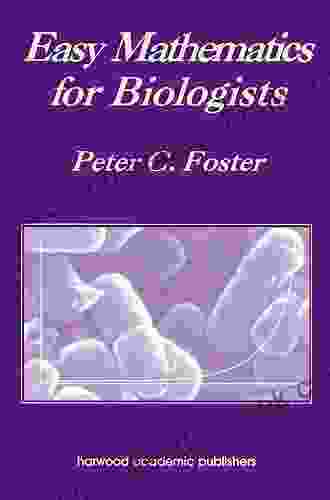
 Henry Wadsworth LongfellowEasy Mathematics for Biologists: A Comprehensive Guide to Quantitative...
Henry Wadsworth LongfellowEasy Mathematics for Biologists: A Comprehensive Guide to Quantitative...
 Ralph Turner101 Coaching Supervision Techniques, Approaches, Enquiries, and Experiments:...
Ralph Turner101 Coaching Supervision Techniques, Approaches, Enquiries, and Experiments:... Lucas ReedFollow ·17.4k
Lucas ReedFollow ·17.4k John MiltonFollow ·18.7k
John MiltonFollow ·18.7k Ernest ClineFollow ·15.1k
Ernest ClineFollow ·15.1k Melvin BlairFollow ·17.8k
Melvin BlairFollow ·17.8k Jon ReedFollow ·8k
Jon ReedFollow ·8k Cormac McCarthyFollow ·16.8k
Cormac McCarthyFollow ·16.8k Steve CarterFollow ·15.6k
Steve CarterFollow ·15.6k Edgar CoxFollow ·15.4k
Edgar CoxFollow ·15.4k

 Darius Cox
Darius CoxThe Gathering Pacific Storm: An Epic Struggle Between...
The Gathering...
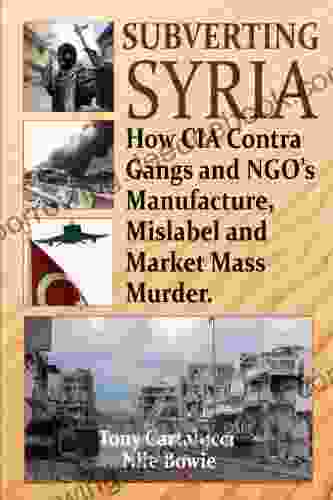
 Hugo Cox
Hugo CoxHow CIA-Contra Gangs and NGOs Manufacture, Mislabel, and...
In the annals of covert operations, the CIA's...
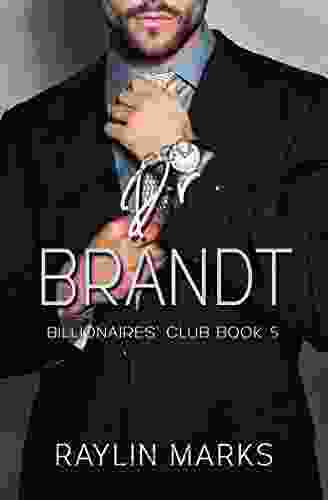
 Finn Cox
Finn CoxDr. Brandt's Billionaires Club Series: The Ultimate...
A Journey into the Pinnacle of...
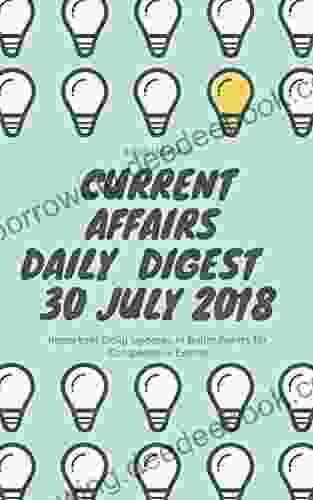
 Isaac Asimov
Isaac AsimovCurrent Affairs Daily Digest 20180730 30th July 2024
National ...

 Felix Carter
Felix CarterBroadway Celebrates The Big Apple Over 100 Years Of Show...
Broadway Celebrates the Big Apple: Over 100...

 Beau Carter
Beau CarterThe Big Book of Flute Solos: A Comprehensive Collection...
If you're a flute player,...
4.4 out of 5
| Language | : | English |
| File size | : | 1107 KB |
| Text-to-Speech | : | Enabled |
| Screen Reader | : | Supported |
| Enhanced typesetting | : | Enabled |
| Word Wise | : | Enabled |
| Print length | : | 204 pages |
| Paperback | : | 200 pages |
| Item Weight | : | 11.2 ounces |
| Dimensions | : | 5.5 x 0.5 x 8.5 inches |


